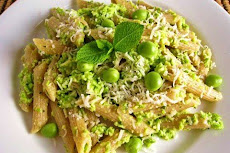
By Emily Fredrix, Associated Press
MILWAUKEE — The creators of the "Got Milk?" campaign are getting ready to make a big push to keep chocolate milk on kids' minds and on school lunch menus, a plan that has some educators and obesity activists none too pleased.
The new ad campaign from the dairy industry, set to launch Monday, emphasizes that sugary flavorings are ways to get kids to drink milk. Without them, some youngsters won't drink regular milk and won't get its nutrients, the ads say.
The "Raise your hand for chocolate milk" campaign starts Monday with an ad in USA Today featuring chocolatey brown colors and the launch of a Web site that asks people to sign a petition declaring their support for chocolate milk in school.
But some educators and obesity experts say kids get enough calcium — essential for bone growth — and will drink white milk if it's the only milk offered. They say kids get too much sugar, which is heightening America's obesity problem, and schools shouldn't serve chocolate milk at all.
The idea behind the campaign is to draw a distinction between chocolate milk and the soda and candy that have come under attack in schools, said Vivien Godfrey, CEO of the Milk Processor Education Program, the industry marketing group that developed the campaign with the National Dairy Council. Godfrey said the effort will cost between $500,000 and $1 million.
She said most kids choose chocolate milk, but without it they drink juice, soda or water, which don't have the same nutrients. The facts — that chocolate milk does have nutrients — are getting lost in the debate over school lunches, she said.
"If there's even a chance chocolate milk might get taken out of schools, that really can do more harm than good," she said.
It's not clear how many schools have chocolate milk or are pulling it. But parents and school districts are becoming increasingly concerned and asking for more information, said Margie Saidel, a vice president with Chartwells School Dining Services, which manages food programs in 600 districts and supports chocolate milk.
But experts like Marlene Schwartz, deputy directory of the Rudd Center for Food Policy and Obesity at Yale University, want chocolate milk tossed. She said kids have too much sugar already and chocolate milk has no place in schools.
Dairy products are a common source of added sugar in children's diets, so that's why parents and educators consider removing them, she said. But the research does not point to any calcium shortages when chocolate milk is removed in schools.
"I don't believe children are going to go on a thirst strike and refuse to drink anything," she said.
Kids happily drink white milk — now the only offering at the Boulder Valley School District in Boulder, Colo., said Ann Cooper, the school's director of nutrition services, who calls herself the "renegade lunch lady" for her efforts to promote more nutrition in school lunches.
She estimates that the extra calories from chocolate milk — as much as 40 or 60 calories on top of a typical 110 calorie 8-ounce serving of white milk — could add up to 5 pounds of weight gain over the 180-day school year. That's why the district no longer offers chocolate milk.
Chocolate milk does have its defenders, even among nutritionists.
"It's better to get the milk in with a little bit of sugary flavoring than have them pick almost any alternative," said Connie Weaver, head of the department of Food and Nutrition at Purdue University and a spokeswoman for the American Society for Nutrition. She has received research funding over the years from the dairy industry, but not on chocolate milk, she said.
A student petition got a Barrington, Ill., distrcit to compromise on its chocolate milk ban.
A soon-to-be fifth-grader, 10-year-old Haley Morris drafted her own petition in support of flavored milk and got about 70 signatures.
Superintendent Tom Leonard decided on a compromise: "Flavored milk Fridays" where the district offers chocolate or strawberry milk one day a week. The district is testing the program through January to see if kids drink more milk the days flavors are offered.
"All of my friends and I, we just wanted chocolate milk back to drink because we like chocolate milk better than white," Morris said.









